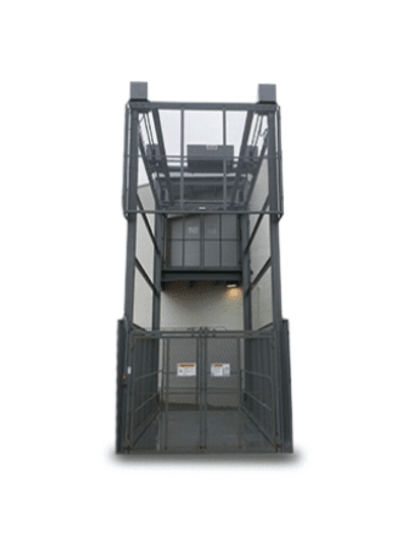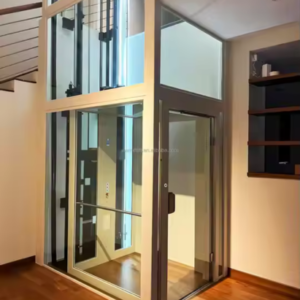Material Lift Elevator
A material lift elevator is designed for transporting heavy goods between different levels in warehouses, factories, and construction sites. It enhances efficiency, reduces manual labor, and ensures safe vertical transportation. With durable construction and advanced safety features, it provides a cost-effective solution for industrial and commercial applications.
Product Description
An Efficient Solution for Heavy Lifting
A material lift elevator is a specialized lifting system used to transport heavy goods, equipment, and materials between different levels of a building or industrial site. These elevators are crucial in warehouses, factories, construction sites, and commercial facilities where manual lifting is impractical. Unlike passenger elevators, material lifts are designed for load transportation only, ensuring efficiency and reliability.
Durable Design and Construction
Material lift elevators are built for durability. They feature high-strength steel frames, reinforced platforms, and industrial-grade components. Since these lifts handle frequent use and heavy loads, they are constructed from sturdy materials that resist wear and tear. Platforms come in different sizes and weight capacities, accommodating various types of goods. Some models have enclosed cabins, while others use an open design for easier loading and unloading.
Key Applications in Industrial and Commercial Settings
Material lift elevators serve multiple industries. In warehouses and distribution centers, they transport goods between storage levels, reducing labor costs and increasing efficiency. Similarly, factories and manufacturing plants rely on them to move raw materials and finished products efficiently. Retail stores and shopping malls also use material lifts to shift stock between storage areas and sales floors, simplifying inventory management. Furthermore, on construction sites, these lifts help move materials like bricks, cement, and steel beams, improving productivity and safety.
Types of Material Lift Elevators
Different types of material lift elevators cater to specific needs. Hydraulic lifts use a fluid-powered system to ensure smooth and stable lifting. These models are ideal for handling heavy loads without excessive energy consumption. On the other hand, mechanical lifts operate using chains, gears, or pulleys, making them suitable for frequent lifting tasks. Additionally, rack-and-pinion lifts are widely used on construction sites because they perform well in rough environments while maintaining stability and reliability.
Safety Features and Compliance
Safety is a top priority in material lift elevators. To prevent accidents, these lifts include safety locks, overload protection, emergency stop buttons, and interlocking gates. Anti-slip surfaces and guardrails add extra security, reducing workplace risks. Moreover, many material lifts comply with international safety regulations, ensuring legal compliance while protecting workers and assets.
Energy Efficiency and Cost Savings
Material lift elevators provide a cost-effective alternative to manual labor and forklifts. By automating the lifting process, businesses reduce workforce strain, minimize injuries, and enhance operational efficiency. Additionally, hydraulic and electric-powered models consume minimal energy, making them eco-friendly and budget-friendly. Investing in a material lift elevator leads to long-term savings by cutting downtime and increasing productivity.
Customization and Modern Innovations
Manufacturers offer various customization options to fit specific business needs. These include different load capacities, platform sizes, and automation features. Many modern material lifts incorporate smart technology, enabling businesses to monitor usage, detect faults, and schedule maintenance via digital systems. Moreover, advanced control panels improve usability, allowing operators to manage lifting operations effortlessly. These innovations make material lifts more user-friendly and efficient.
Maintenance for Long-Term Performance
Regular maintenance is essential to keep material lift elevators functioning properly. Routine inspections, lubrication of moving parts, and timely repairs prevent mechanical failures and extend the lift’s lifespan. Scheduled servicing ensures smooth performance, minimizes unexpected breakdowns, and maintains business operations without interruptions. In addition to improving durability, proper maintenance enhances workplace safety and efficiency.













Reviews
There are no reviews yet.